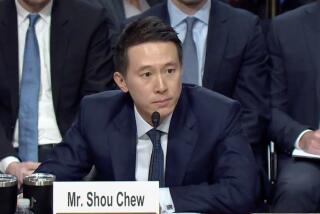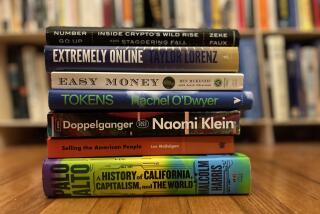Read these: Khamenei and Setad, self-driving cars and more

The Web can feel like an endless onslaught of information. There’s never enough time to take it all in. Great stories slip by unread in the constant stream of updates, alerts and notifications.
After a long week of info-overload, take a moment to unwind and relax with some of the week’s best reads, long-form journalism and investigative reports from newspapers, magazines, websites and blogs -- including a few stories of our own.
A three-part Reuters investigation looks into Setad, a powerful organization controlled by Iran’s supreme leader, Ayatollah Ali Khamenei. With $95 billion in assets and ties to almost every sector of the economy, the little-known charitable group has amassed a massive financial empire built on property seizures.
Foreign Policy delves into the secret twin of Stuxnet, the first publicly disclosed cyberweapon that continues to baffle military strategists and computer security experts. FP reports that many elements of the comfortable narrative we now know about the program to sabotage Iran’s nuclear facilities are either incorrect or incomplete (free registration required).
Huffington Post looks into the one-man blog that has exposed secrets of the war in Syria and become required reading for intelligence agencies, human rights organizations and news outlets. From the comfort of his living room, shaggy-haired blogger Eliot Higgins trawls Twitter, Google and YouTube in hopes of solving the same whodunits confronting world leaders.
A Marine lieutenant colonel who came to the conclusion that the U.S. way of advising the Afghan army wasn’t working came up with his own solution: He took a regiment of Afghani fighters under his wing. Fast Company recounts how the bold approach changed the course of events on the ground in Afghanistan.
Despite some of the strictest regulations in the country, California has failed to keep track of thousands of tons of dangerous chemicals and toxic metals shipped for disposal on the state’s roads and railways, a Los Angeles Times investigation found.
The New York Times goes undercover aboard a boat transporting refugees across the Indian Ocean from Indonesia to the Christmas Islands. The desperate situation illustrates the plight of every refugee: Any hardship they endure beats the hardship they’re escaping.
After more than four decades, the original National Security Agency whistle-blower talks to Gawker about spilling his secrets -- long before anyone had ever heard of Edward Snowden. Now a semi-retired antiques dealer, the rogue analyst’s revelations brought to light the scope and mission of a spy organization largely unknown to the public at the time.
American Prospect tells the stories of U.S. workers in the age of anxiety who have struggled to maintain their standard of living as incomes have flat-lined. From 1947 to 1974, Americans brought home most of the wealth they produced. In the decades since, they’ve steadily lost power.
SB Nation exposes boxing’s not-so-well-kept secret: Most fighters can’t afford to step out of the ring. The in-depth story focuses on Manny Pacquiao, who has earned more than $200 million in his career but doesn’t have much of it left.
The Los Angeles Times looks at a two-year project by the Los Angeles Police Department to digitize cold-case homicide records -- crime-scene photos, Polaroids of witnesses, medical reports and notes scrawled on yellowing paper. A first-of-its-kind partnership with the FBI will place sought-after information a click away for detectives or families.
The New Yorker takes a ride in a self-driving car with an engineer from Google X, the company’s semi-secret lab for experimental technology. The Google car, it finds, never gets drowsy, distracted or confused about who has the right-of-way.
The Los Angeles Times profiles a Seattle college professor and Occupy activist who beat a longtime incumbent at the ballot box with her message that workers need an alternative to the two main parties. The ascendancy of a socialist to the city council is an indicator of shifting Seattle politics -- of how elections are run in the city and what voters are thinking.
The Big Roundtable recalls the breakup of the British Empire in 1947 and the violence that erupted among Muslims, Hindus and Sikhs in parts of what would become Pakistan and India. Six decades later, an 82-year-old man who witnessed the bloodshed as a young boy remembers the horror and sleepless nights he experienced.
On the anniversary of John F. Kennedy’s assassination, the Wall Street Journal looks at how the images of Lee Harvey Oswald’s shooting changed American art, film and television.
The Atlantic wonders how many of our memories are fake. Researchers find what goes into false memories by testing people who can remember what they ate for breakfast on a specific day 10 years ago.
Slate expounds on why the word “the” is so difficult to define. Look up “the” in the dictionary and you find a list of situations where “the” is used but not an explanatory definition.
More to Read
Start your day right
Sign up for Essential California for news, features and recommendations from the L.A. Times and beyond in your inbox six days a week.
You may occasionally receive promotional content from the Los Angeles Times.







